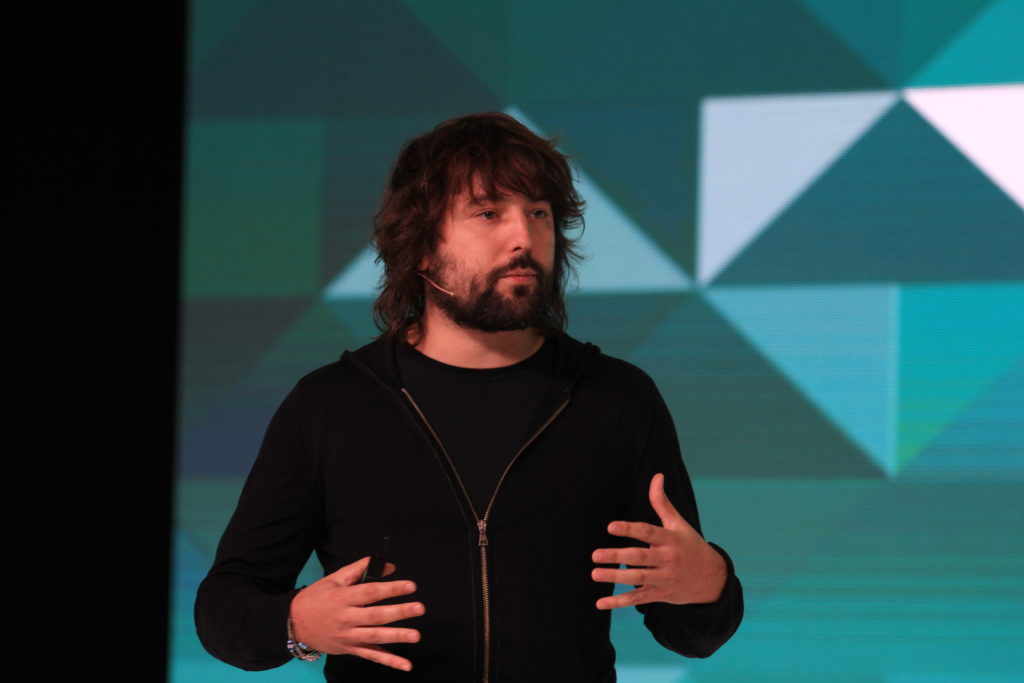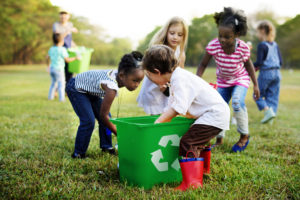
Blog
For the Future of Packaging, Impatience is a Virtue
Photo: Tom Szaky, founder of TerraCycle
“The big elephant in the room is that all of your packaging is already recyclable.”
Tom Szaky, founder of TerraCycle and believer that all things – even cigarette butts – are recyclable, took to the stage at Leadership Forum today, where he told the CPG company leaders in attendance that the real question was not if their packaging could be recycled, but when it would be practically recycled.
“When” was a constant question throughout the series of sessions focused on packaging sustainability. The impatience in the room was palpable. Because time is running out.
Omnipresent and impossible-to-forget visuals of the Pacific garbage patch and whales bloated with plastic have changed the environment. “Plans to get things done by 2030 is too far away to get things done,”shared Recology CEO Michael Sangiacomo. “People are concerned, and there’s going to be a backlash.”
We are at a crossroads in the U.S. on recycling – but most Americans have no idea. 74% of Americans believe that all or most of their recycling actually gets recycled. But China’s National Sword policy changed the economics of recycling, seemingly irreversibly. Unfortunately, to-date, the only solution in practice has been cutting back on recycling across the country.
“Politicians look at labels on trash and assume that the name on the label must be the problem,” said Consumer Brands Association President and CEO Geoff Freeman. “They are flailing to deal with the issue and defaulting to the lowest common denominator instead of thinking through and understanding the issue.”
Szaky spent most of his talk on solving the root causes of packaging waste. He boiled it down to the value of packaging, simply stating that if the cost of sorting and processing is greater than the material value, it is set up to fail. He added, “If you make the package from solid gold, you would never have an issue.”
While packaging isn’t going to move to solid gold, it may be moving to a much sleeker, modern look. TerraCycle’s Loop initiative aims to move to a new model – that’s really an old model. Returning to the “milkman” approach of the 1950s, Szaky envisions a world where the packaging is a selling point for manufacturers, making packages more durable and opening opportunities to entirely re-design packaging for the products we use every day.
How that model shows up for Loop is in reusable packaging that is durable, practical and beautiful. Tide or Clorox wipes that are, as Szaky says, “counter-worthy.”
.@Tom__Szaky: This packaging isn’t just sustainable, people tell us it’s “counter worthy.” It’s a consumer-preferred aesthetic. Sustainable products don’t have to mean sacrifice.
— Grocery Manufacturers (@GroceryMakers) August 15, 2019
Across the industry, CPG manufacturers are making major commitments to using more recycled materials in their packaging. But there isn’t anywhere near enough supply to meet the demand based on the targets set by many of the companies in the room. “We’re off by an order of magnitude,” Szaky said.
Coca-Cola is among the most vocal CPG companies about wanting to reuse their own packaging. CEO James Quincey said in Davos earlier this year, “We’ve done an amazing job, collectively, of delivering convenience to consumers. We’ve delivered fantastic-tasting products that are easy to buy, easy to consume. But we have not yet made them easy to recover and reuse.”
Making the material easy to recover and reuse speaks to another issue. CPG companies use and need a lot of packaging. Much of it is single-use and ends up where it shouldn’t. But that isn’t a permanent condition – it’s an opportunity to fix a broken system, if the right industries join CPG in doing so.
There are things that CPG companies can control. They can design packaging that is recyclable, slimmer or made from recycled content. They can use a different materials that are easier to recycle. They can choose to partner with TerraCycle’s Loop or other programs that move away from single-use packages.
But they are limited. They don’t have control over the breakdowns in the recycling system. They can’t go into the homes of consumers to ensure they are recycling properly (or at all). They can’t make the patchwork of local rules more streamlined or easier to understand. They can’t change the profitability equation for waste management companies.
“If we want to make a difference, there has to be shared responsibility,” said Meghan Stasz, Consumer Brands Association’s vice president of packaging sustainability.
As Szaky said at the beginning of his talk, most packaging is already recyclable. But walking away from this session, the unanswered question is if that packaging was designed on wrong assumptions. Coast-to-coast, recycling systems are accepting fewer materials and recycling centers are shutting down in droves. Yet, packaging is designed with the assumption that there is a functioning recycling system for recyclable packaging.
That assumption may be a mistake. If it’s a mistake, it’s a mistake that others are making too. Legislative proposals in the states and at the federal level that mandate recycled content or packaging recyclability assume a functioning recycling system will process those materials. Consumers have very little awareness of the changes because they are largely invisible to them, so they faithfully toss items in their recycling bin week after week, not knowing it may end up as waste.
Are we going to allow this environmentally disastrous assumption to continue or solve for the system?
The impatience in the room today proves a strong appetite for solutions – if we can get everyone to the table.
Published on August 17, 2019



